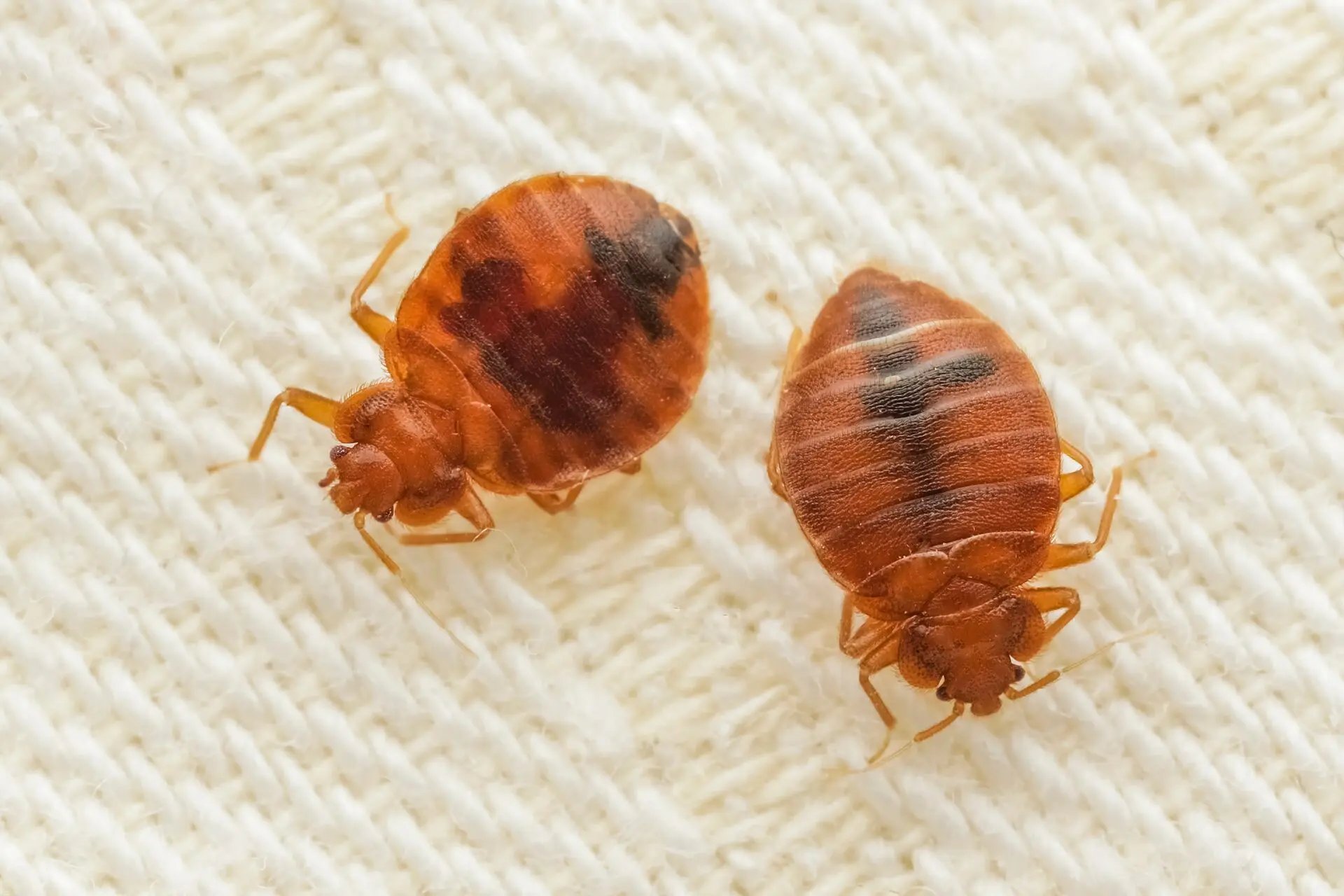Home>Science>The Surprising Truth About Bat Bugs Vs Bed Bugs


Science
The Surprising Truth About Bat Bugs Vs Bed Bugs
Published: February 8, 2024
Discover the science behind bat bugs versus bed bugs and uncover the surprising truth about these pesky pests. Explore their differences and similarities to better understand how to deal with them.
(Many of the links in this article redirect to a specific reviewed product. Your purchase of these products through affiliate links helps to generate commission for Noodls.com, at no extra cost. Learn more)
Table of Contents
Introduction
When it comes to household pests, the mere mention of bed bugs can send shivers down the spine of even the most composed individuals. The thought of these elusive creatures lurking in the shadows, waiting to pounce on unsuspecting victims as they sleep, is enough to make anyone feel uneasy. However, there is another insect that often gets mistaken for its notorious cousin – the bat bug.
In this article, we will delve into the intriguing world of bat bugs and bed bugs, exploring their physical differences, feeding habits, behavior, habitat, and the potential health risks they pose. By shedding light on these two similar yet distinct pests, we aim to provide you with a comprehensive understanding of their nature and the necessary measures to prevent and address infestations.
So, if you've ever wondered about the differences between bat bugs and bed bugs, or if you simply want to arm yourself with knowledge to protect your home and loved ones, you're in the right place. Let's embark on this entomological journey and uncover the surprising truth about these elusive blood-sucking insects.
What are Bat Bugs and Bed Bugs?
Bat bugs and bed bugs are small, wingless insects that belong to the Cimicidae family. Despite their similar appearance and blood-feeding behavior, these pests have distinct characteristics and preferred hosts.
Bed Bugs:
Bed bugs, scientifically known as Cimex lectularius, are notorious for their association with human habitats. These reddish-brown insects are adept at hiding in cracks and crevices, emerging at night to feed on the blood of sleeping individuals. Their flattened bodies allow them to squeeze into the tiniest of spaces, making them challenging to detect and eliminate. Bed bugs are commonly found in mattresses, bed frames, and furniture, making them a persistent nuisance in residential and commercial settings.
Bat Bugs:
On the other hand, bat bugs, scientifically referred to as Cimex adjunctus and Cimex pilosellus, are closely related to bed bugs but have a primary association with bats. These ectoparasites infest bat roosts, where they feed on the blood of bats. However, when bats are not available, bat bugs may seek alternative hosts, including humans and pets. This opportunistic behavior can lead to infestations in human dwellings, particularly in homes with bat colonies in the vicinity.
While both bat bugs and bed bugs share a common ancestry and similar physical attributes, their distinct host preferences set them apart. Understanding these differences is crucial for effective pest management and eradication.
In the following sections, we will explore the physical disparities, feeding habits, behavior, habitat, health risks, prevention, and treatment methods associated with bat bugs and bed bugs. By gaining insight into these aspects, individuals can better equip themselves to identify, address, and mitigate the impact of these blood-feeding insects in their living spaces.
Physical Differences
When it comes to differentiating between bat bugs and bed bugs, understanding their physical disparities is essential. While these insects bear a striking resemblance, several key features set them apart.
Size and Shape:
One of the primary distinctions between bat bugs and bed bugs lies in their size and shape. Bat bugs typically have longer hairs on their thorax compared to bed bugs, which contributes to their overall appearance. Additionally, bat bugs are often slightly larger than bed bugs, with a more elongated body shape. These subtle differences may require a keen eye to discern but can be crucial in accurately identifying the species.
Hairs and Pronotum:
Bat bugs possess longer hairs on their pronotum, the shield-like structure behind the head, which distinguishes them from bed bugs. This characteristic is particularly useful for entomologists and pest control professionals when conducting thorough inspections to confirm the presence of bat bugs in infested areas.
Host-Specific Adaptations:
Since bat bugs have evolved to primarily parasitize bats, they have developed specific physiological adaptations that cater to their bat hosts. These adaptations may include subtle variations in mouthpart structure and length, which enable them to effectively feed on bat blood. In contrast, bed bugs exhibit adaptations tailored to feeding on human blood, reflecting their long-standing association with human habitats.
Genetic Markers:
Advancements in genetic analysis have facilitated the identification of genetic markers unique to bat bugs and bed bugs. Through DNA testing and molecular techniques, researchers and pest management professionals can accurately differentiate between the two species, providing valuable insights for targeted control measures.
By familiarizing oneself with these physical disparities, individuals can enhance their ability to identify and address bat bug and bed bug infestations effectively. This knowledge serves as a valuable tool in the realm of pest management, enabling homeowners and professionals to implement tailored strategies for eradication and prevention.
Understanding the physical differences between bat bugs and bed bugs is a crucial step in effectively managing infestations and minimizing the impact of these blood-feeding insects on human and animal hosts.
Feeding Habits
The feeding habits of bat bugs and bed bugs provide valuable insights into their preferred hosts and the potential implications for infestations in human dwellings. Both bat bugs and bed bugs are hematophagous, meaning they rely on blood as their primary source of nutrition. However, their distinct host preferences and feeding behaviors set them apart.
Bat Bugs:
Bat bugs have evolved to parasitize bats, feeding exclusively on bat blood within roosting sites. These ectoparasites are highly specialized to thrive in bat-inhabited environments, where they access their primary food source. When bats are present, bat bugs exhibit a strong preference for their winged hosts, relying on them for sustenance and reproductive opportunities. The close association between bat bugs and bats underscores their dependence on these mammalian hosts for survival and reproduction.
Bed Bugs:
In contrast, bed bugs have adapted to thrive in human habitats, where they opportunistically feed on the blood of sleeping individuals. Their nocturnal feeding behavior is well-suited to their human hosts' sleeping patterns, allowing them to engorge themselves on blood while minimizing the risk of detection. Bed bugs are equipped with specialized mouthparts that pierce the skin and extract blood, enabling them to feed discreetly and efficiently. Their ability to thrive in human living spaces has contributed to their status as pervasive household pests, capable of causing significant distress and economic repercussions.
Understanding the divergent feeding habits of bat bugs and bed bugs is crucial for effective pest management and control. By recognizing their specific host preferences and feeding behaviors, homeowners and pest control professionals can tailor their eradication efforts to address the unique challenges posed by each species.
Furthermore, the distinct feeding habits of bat bugs and bed bugs underscore the importance of targeted interventions to mitigate infestations. Implementing comprehensive strategies that account for the specific behaviors and ecological requirements of these blood-feeding insects is essential for achieving long-term pest control and preventing recurrent infestations.
In summary, the feeding habits of bat bugs and bed bugs reflect their evolutionary adaptations to distinct host environments, emphasizing the need for tailored pest management approaches to address infestations effectively. By gaining a deeper understanding of their feeding behaviors, individuals can enhance their ability to detect, treat, and prevent infestations, ultimately safeguarding their living spaces from the impact of these blood-feeding pests.
Behavior and Habitat
Behavior and habitat play a pivotal role in understanding the ecological dynamics of bat bugs and bed bugs. These aspects shed light on the insects' preferences, tendencies, and adaptations to specific environments, ultimately influencing their impact on human dwellings.
Behavior:
Bat bugs and bed bugs exhibit distinct behavioral patterns that reflect their evolutionary adaptations and host preferences. While both species are nocturnal and feed on blood, their behaviors diverge based on their primary hosts and ecological niches. Bat bugs, as their name suggests, are closely associated with bats and exhibit a strong affinity for roosting sites inhabited by these winged mammals. Their behavior is intricately linked to the presence of bats, as they rely on these hosts for blood meals and breeding opportunities. When bats are absent, bat bugs may seek alternative hosts, including humans and pets, albeit with reduced reproductive success.
In contrast, bed bugs have adapted to thrive in human habitats, displaying a remarkable ability to conceal themselves within cracks, crevices, and furniture near sleeping areas. Their behavior is attuned to human sleeping patterns, allowing them to emerge under the cover of darkness to feed on unsuspecting individuals. Bed bugs' elusive behavior, coupled with their resilience to hunger and ability to survive extended periods without feeding, contributes to their persistent presence in residential and commercial settings.
Habitat:
The habitat preferences of bat bugs and bed bugs reflect their distinct ecological niches and host associations. Bat bugs are commonly found in bat roosts, particularly in attics, caves, and other locations where bats seek shelter. These insects thrive in environments frequented by bats, where they have adapted to exploit the presence of their primary hosts for sustenance and reproduction. When bats roost in close proximity to human dwellings, bat bugs may inadvertently find their way into homes, leading to potential infestations and human-biting incidents.
On the other hand, bed bugs gravitate towards human living spaces, particularly bedrooms and sleeping areas, where they can access their preferred hosts for blood meals. Their adeptness at concealing themselves in bedding, mattresses, and furniture near sleeping quarters enables them to remain in close proximity to their human hosts, facilitating regular feeding opportunities. Bed bugs' habitat preferences align with their reliance on human blood for survival, highlighting their remarkable ability to adapt to indoor environments and exploit human activities for sustenance.
Understanding the behavior and habitat preferences of bat bugs and bed bugs is essential for implementing targeted pest management strategies. By recognizing the ecological cues that influence their behaviors and habitat selection, individuals can adopt proactive measures to mitigate infestations and minimize the impact of these blood-feeding insects on human and animal hosts.
Health Risks
The presence of bat bugs and bed bugs in human dwellings poses notable health risks, ranging from physical discomfort to potential allergic reactions and psychological distress. While both species are primarily associated with blood-feeding, their impact on human health extends beyond the immediate sensation of bites. Understanding the health risks associated with bat bugs and bed bugs is essential for individuals seeking to safeguard their well-being and mitigate the implications of infestations.
Physical Discomfort and Skin Irritation
The bites of bat bugs and bed bugs can cause physical discomfort, often manifesting as red, itchy welts on the skin. Individuals who are bitten may experience localized swelling, irritation, and a persistent urge to scratch the affected areas. Prolonged scratching can lead to secondary skin infections, exacerbating the discomfort and potentially necessitating medical attention. The recurring nature of bites, particularly in cases of severe infestations, can significantly disrupt sleep and daily activities, impacting an individual's overall well-being.
Allergic Reactions
For some individuals, exposure to bat bug and bed bug bites can trigger allergic reactions, ranging from mild to severe responses. Allergic individuals may experience heightened inflammation, excessive itching, and, in rare cases, anaphylaxis, a potentially life-threatening condition. The allergens present in bat bug and bed bug saliva can elicit immune responses, posing a significant risk to susceptible individuals. Identifying and addressing infestations is crucial for minimizing the likelihood of allergic reactions and protecting the health of occupants.
Psychological Distress
The presence of bat bugs and bed bugs in living spaces can contribute to psychological distress, including anxiety, stress, and insomnia. The persistent fear of encountering these nocturnal pests, coupled with the psychological impact of repeated bites, can take a toll on individuals' mental well-being. Sleep disturbances, heightened vigilance, and the emotional burden of coping with infestations can lead to adverse psychological effects, underscoring the broader health implications associated with these blood-feeding insects.
Secondary Infections
Scratching bites resulting from bat bugs and bed bugs can break the skin, creating entry points for bacteria and other pathogens. Secondary bacterial infections, such as impetigo and cellulitis, can develop as a consequence of incessant scratching and compromised skin integrity. These infections not only exacerbate the physical discomfort but also necessitate medical intervention, highlighting the potential health complications associated with untreated infestations.
Anemia (Rare Cases)
In extreme and prolonged infestations, particularly in cases of severe bed bug infestations, there is a theoretical risk of anemia, albeit rare. The repeated blood-feeding behavior of bed bugs, coupled with a significant infestation burden, can potentially lead to a gradual depletion of red blood cells in susceptible individuals, resulting in anemia. While such occurrences are uncommon and typically associated with extreme infestation scenarios, the potential health impact underscores the importance of prompt intervention and eradication measures.
By recognizing the diverse health risks posed by bat bugs and bed bugs, individuals can prioritize proactive pest management and seek professional assistance to address infestations effectively. Implementing comprehensive strategies to mitigate the health implications of these blood-feeding insects is essential for safeguarding the well-being of occupants and fostering a healthy living environment.
Prevention and Treatment
Preventing and treating bat bug and bed bug infestations requires a comprehensive approach that encompasses proactive measures, targeted interventions, and diligent management strategies. By adopting a proactive stance and implementing effective treatment protocols, individuals can mitigate the risk of infestations and address existing issues to safeguard their living spaces.
Prevention
-
Sealing Entry Points: Conduct a thorough inspection of the property to identify and seal potential entry points for bat bugs and bed bugs. Cracks, crevices, and gaps in walls, ceilings, and foundations should be sealed to prevent the ingress of these pests.
-
Monitoring Bat Colonies: For properties near bat roosting sites, regular monitoring of bat colonies and roosting areas is essential. Identifying and addressing bat infestations can mitigate the risk of bat bugs inadvertently entering human dwellings.
-
Bedding and Furniture Inspection: Routinely inspect bedding, mattresses, and furniture for signs of bat bugs and bed bugs. Early detection of infestations enables prompt intervention and prevents the escalation of pest burdens.
-
Clutter Reduction: Minimize clutter and maintain a tidy living environment to eliminate potential harborage sites for bat bugs and bed bugs. Decluttering facilitates pest detection and reduces hiding places for these insects.
-
Vacuuming and Laundering: Regular vacuuming of carpets, upholstery, and curtains, coupled with frequent laundering of bedding and clothing, can help remove bat bugs and bed bugs, as well as their eggs and larvae.
Treatment
-
Professional Pest Control: Engage the services of licensed pest control professionals with expertise in bat bug and bed bug management. Professional exterminators can conduct thorough inspections, implement targeted treatments, and provide guidance on long-term prevention strategies.
-
Chemical Treatments: In cases of severe infestations, chemical treatments, such as insecticide applications, may be necessary. These treatments should be administered by qualified professionals to ensure efficacy and safety.
-
Heat Treatment: Heat treatments, utilizing specialized equipment to raise the temperature within infested areas to levels lethal to bat bugs and bed bugs, can be an effective non-chemical approach to eradication.
-
Integrated Pest Management (IPM): Adopt an integrated pest management approach that combines various strategies, including sanitation, exclusion, monitoring, and targeted treatments, to address bat bug and bed bug infestations comprehensively.
-
Education and Awareness: Educate occupants about the signs of bat bug and bed bug infestations, preventive measures, and early intervention strategies. Promoting awareness fosters a proactive mindset and empowers individuals to address pest-related challenges effectively.
By integrating preventive measures with targeted treatment approaches, individuals can fortify their defenses against bat bugs and bed bugs, minimizing the risk of infestations and mitigating the impact of these blood-feeding pests on their living spaces. Prioritizing proactive pest management and seeking professional guidance are essential steps in creating a pest-resilient environment conducive to the well-being of occupants.
Conclusion
In conclusion, the world of bat bugs and bed bugs is a fascinating yet concerning realm, characterized by the intricate interplay between these blood-feeding insects and their human and animal hosts. Through our exploration of their physical disparities, feeding habits, behavior, habitat, health risks, and strategies for prevention and treatment, we have gained valuable insights into the surprising truth about these elusive pests.
The distinction between bat bugs and bed bugs extends beyond their external appearance, encompassing their evolutionary adaptations, host preferences, and ecological niches. While bat bugs have evolved to parasitize bats and thrive in bat-inhabited environments, bed bugs have capitalized on their association with human habitats, demonstrating remarkable resilience and adaptability to indoor settings.
The feeding habits of bat bugs and bed bugs, shaped by their host-specific adaptations, underscore the intricate ecological relationships that define their existence. Understanding these behaviors is pivotal for implementing targeted pest management strategies that account for their unique requirements and challenges.
Furthermore, the health risks associated with bat bugs and bed bugs highlight the broader implications of infestations, ranging from physical discomfort and allergic reactions to psychological distress and potential secondary infections. By recognizing these risks, individuals can prioritize proactive measures to mitigate the impact of these blood-feeding insects on their well-being and living environments.
The comprehensive approach to prevention and treatment outlined in this article emphasizes the importance of proactive pest management and the engagement of professional expertise in addressing infestations effectively. By integrating preventive measures, regular monitoring, and targeted interventions, individuals can fortify their defenses against bat bugs and bed bugs, fostering a pest-resilient environment conducive to their health and peace of mind.
In essence, the surprising truth about bat bugs and bed bugs lies not only in their shared ancestry and physical similarities but also in the nuanced differences that define their ecological roles and interactions with human and animal hosts. By equipping ourselves with knowledge and proactive strategies, we can navigate this entomological landscape with confidence, safeguarding our living spaces from the impact of these blood-feeding pests and fostering a harmonious coexistence with the natural world.












